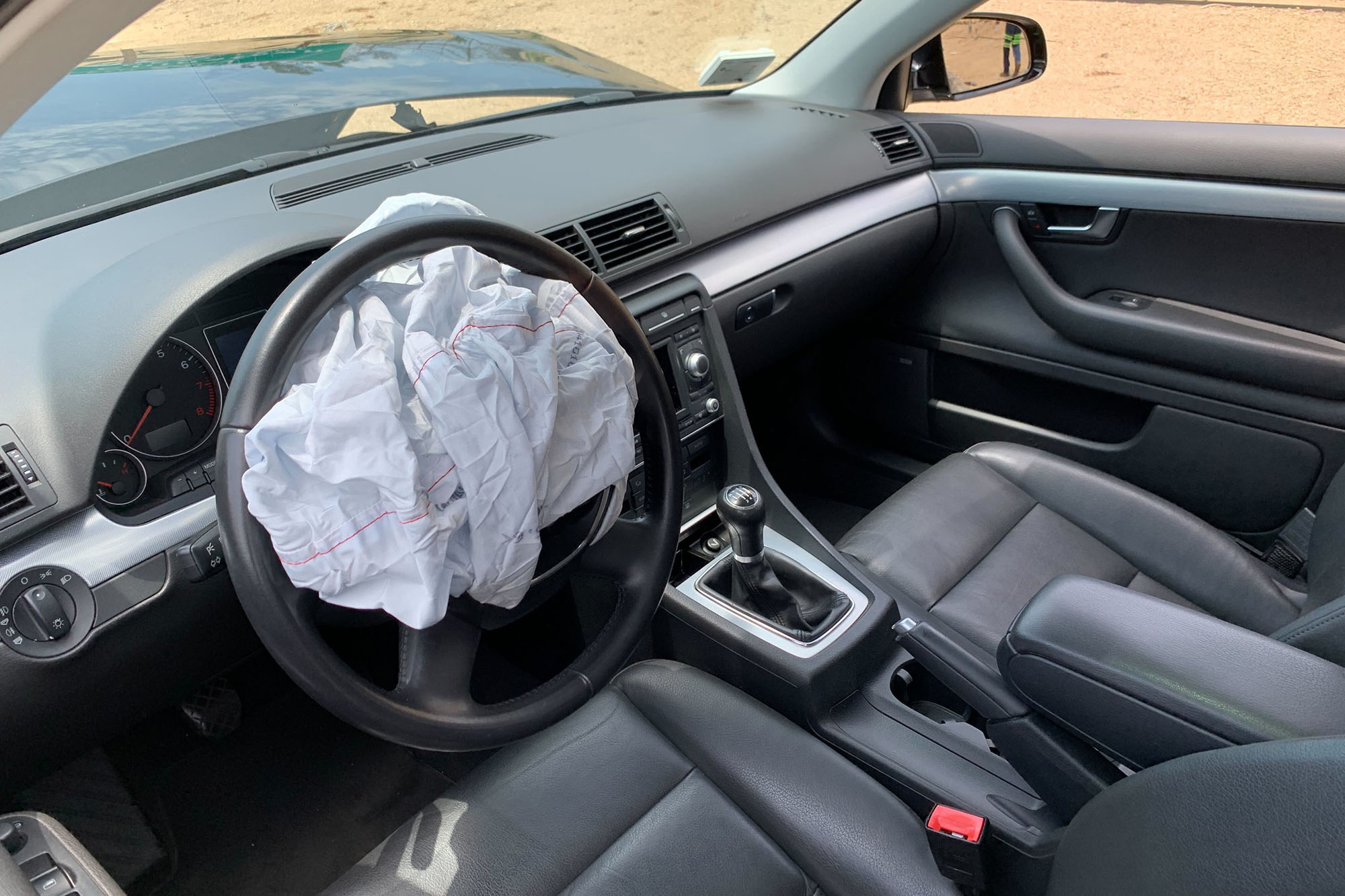How Do Airbags Work?
Learn about the science behind this important crash-protection equipment.
 Manuel Carrillo III | Capital One
Manuel Carrillo III | Capital One
Every modern passenger car is equipped with airbags, but many people may not be familiar with how this important safety technology works. Here's a rundown on what you need to know about the science behind airbags, how they protect passengers, and how the technology works in a car crash.
 Manuel Carrillo III
Manuel Carrillo III
How Airbags Protect Passengers
In an automobile crash, the key to keeping the driver and passengers safe from harm is by deflecting, absorbing, or channeling the extreme physical forces generated by a collision. Some of this is done through crumple zones in the metals that make up a vehicle's bodywork and chassis, while much of the rest is handled through the deployment of airbags.
Standard equipment in all cars and trucks for the past 25 years, airbags inflate instantaneously when a crash or impact is detected, forming a protective cushion around vehicle occupants. This cushion dissipates energy and reduces the chance of someone banging against the dash, steering wheel, windshield, and door panels, thus dramatically reducing the risk of injury or death.
 Manuel Carrillo III
Manuel Carrillo III
How an Airbag Works
Airbags consist of three primary components. The first is the airbag module itself, which is a compressed fabric sack stuffed into a small cavity inside a car's cabin. This sack is attached to an inflator, which relies on data gathered by a crash sensor to activate.
When a car accident occurs, the crash sensor detects how quickly the vehicle was traveling and measures the force of the impact. If it's above a certain threshold, there's an activation signal sent to the inflator.
Typically, forces above those generated by an impact with a solid wall at speeds of around 16 mph for front airbags — and even lower for other types — will trigger an airbag. On some vehicles, when passengers are unbelted or when collisions involve narrow obstacles, such as light poles, the threshold can drop.
Once activated, the inflator ignites a charge made of sodium azide, a chemical that combines with potassium nitrate to produce enough nitrogen gas to fill the entire bag. The entire process happens in less than a second, with the bag expanding at a speed of 200 mph. There generally is a harmless powder left behind when the bag deflates a few seconds later.
 Manuel Carrillo III
Manuel Carrillo III
Different Types of Airbags
Airbags can be divided into a few categories. Steering wheel-mounted airbags were often the first units installed in passenger cars and later were matched with airbags in the dashboard for the front passenger. These were eventually joined by side airbags — some of which expand like a curtain alongside the front and rear occupants — knee airbags, and even inflatable seat belts that were introduced by Ford.
Airbags can also be sorted by how many inflation stages they offer. Early airbag systems offered a single-stage inflation module, while more modern designs can use a dual-stage setup. Dual-stage units can inflate smaller to focus protection on the head and neck in minor collisions and larger to cover more of the body in severe crashes.
Written by humans.
Edited by humans.
 Benjamin Hunting
Benjamin HuntingBenjamin Hunting is a writer and podcast host who contributes to a number of newspapers, automotive magazines, and online publications. More than a decade into his career, he enjoys keeping the shiny side up during track days and always has one too many classic vehicle projects partially disassembled in his garage at any given time. Remember, if it's not leaking, it's probably empty.
Related articles
View more related articles